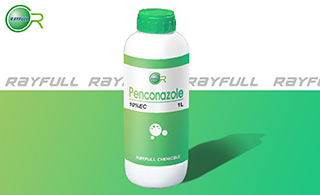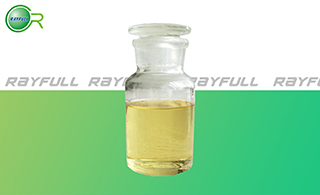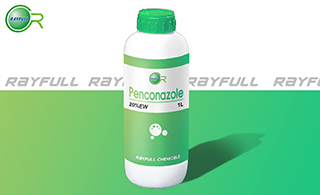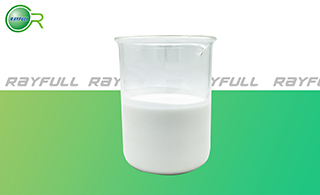Penconazole
    戊菌唑 戊菌唑
Introduction: Penconazole is a systemic triazole fungicide with preventive and curative properties for the control of powdery mildew. It stops the development of fungi by interfering with the biosynthesis of sterols in cell membranes. It is used on fruit, especially apples and grapes, and vegetables.
Common name: Penconazole
Another name: Topaze; Penconazol; Onmex; Topaze C; Topas MZ; Penconazole [BSI:ISO]; CGA 71818; EINECS 266-275-6; BRN 0541488; etc.
Chemical name: (RS)-1-[2-(2,4-dichlorophenyl)pentyl]-1H-1,2,4-triazole
Empirical formula: C13H15Cl2N3
Structural formula:

Mol. Weight: 284.18 g/mol
CAS No.: 66246-88-6
Specifications
Leading Penconazole supplier
Penconazole 95% TC
Penconazole 10% EC
Penconazole 20% EW
Packing:
BULK PACKING
Powder: 25kg/Bag, 25kg/Drum, 50kg/Drum etc.
Liquid: 200L/Drum, 20L/Drum, 10L/Drum etc.
SMALL PACKING
Powder: 1kg/Alu bag, 500g/Alu bag, 200g/Alu bag, 100g/Alu bag, 50g/Alu bag, 15g/Alu bag etc.
Liquid: 5L/Drum, 1L/Bottle, 500ml/Bottle, 250ml/Bottle, 100ml/Bottle, 50ml/Bottle etc.
Customerized packing label
Penconazole FAO standard
Professional registration
HAZARDS IDENTIFICATION
Hazard statement(s)
H302 (99.22%): Harmful if swallowed.
H361 (93.8%): Suspected of damaging fertility or the unborn child.
H400 (98.45%): Very toxic to aquatic life.
H410 (99.22%): Very toxic to aquatic life with long lasting effects.
Precautionary statement(s)
P201: Obtain special instructions before use.
P202: Do not handle until all safety precautions have been read and understood.
P264: Wash ... thoroughly after handling.
P270: Do not eat, drink or smoke when using this product.
P273: Avoid release to the environment.
P281: Use personal protective equipment as required.
P301+P312: IF SWALLOWED: call a POISON CENTER/doctor/... IF you feel unwell.
P308+P313: IF exposed or concerned: Get medical advice/attention.
P330: Rinse mouth.
P391: Collect spillage.
P405: Store locked up.
P501: Dispose of contents/container to an approved waste disposal plant.
Supplemental Hazard Statements: none.
MAMMALIAN TOXICOLOGY
Acute toxicity: 1) Acute oral LD50 for rats is >2000 mg/kg. 2) Acute dermal LD50 for rats is >3000 mg/kg. 3) Acute inhalation toxicity LC50 (4 h) for rats is >4 mg/L. 4) Skin irritation: Slightly irritating to skin (rabbits). 5) Eye irritation: Non-irritating to eyes (rabbits). 6) Skin sensitization for guinea pig: Not a sensitizer.
NOEL: (27 m) for rats is 8.1 mg/kg/day; (2 y) for mice is 36 mg/kg/day; (1 y) for dogs is 3.1 mg/kg/day. Other Not genotoxic. Not carcinogenic.
ADI (JMPR) 0-0.03 mg/kg b.w. [1992, 2015]
Classification:
WHO Classification: III (Slightly hazardous)
EC Risk Classification: Reproduction risk category 3: R63; Xn - Harmful: R22; N - Dangerous for the environment: R51, R53.
US EPA Classification (formulation): No consensus across products or no products available.
ECOTOXICOLOGY
Effect on birds: Acute oral LD50 for Mallard is >1590 mg/kg. Effect on fish: Acute LC50 (96 h) for Rainbow trout is 1.134 mg/l. Effects on aquatic invertebrates: Acute EC50 (48 h) for Daphnia magna is 6.75 mg/l. Effects on algae: Acute 72 hour EC50 for Pseudokirchneriella subcapitata is 4.9 mg/l. Effects on bees: contact acute 48 hour LD50 is >30 μg/bee, oral acute 48 hour LD50 is >112 μg/bee. Effects on earthworms: Acute 14 day LC50 is >331.5 mg/kg.
ENVIRONMENTAL FATE
Animals After oral administration, penconazole is rapidly eliminated practically to entirety with urine and faeces. Residues in tissues were not significant and there was no evidence for accumulation. Plants Metabolic pathways are hydroxylation of the propyl side-chain, conjugation to glucosides or metabolism to triazolylalanine and triazolylacetic acid. Soil/Environment DT50 in soil is 133-343 d, depending on soil type. DT50 for photolysis is 4 d (natural sunlight).
Usage: Penconazole was introduced by Ciba-Geigy AG (now Syngenta AG). It is a fungicide used to control fungal pathogens, particularly Ascomycetes, Basidiomycetes and Deuteromycetes.
Application: Biochemistry Sterol demethylation inhibitor; inhibits cell membrane ergosterol biosynthesis, stopping development of the fungi. Mode of action Systemic fungicide with protective and curative action. Absorbed by the leaves, with translocation acropetally. Uses Control of powdery mildew, pome fruit scab and other pathogenic Ascomycetes, Basidiomycetes and Deuteromycetes on vines, pome fruit, stone fruit, ornamentals, hops and vegetables, at 25-75 g/ha.
| 






